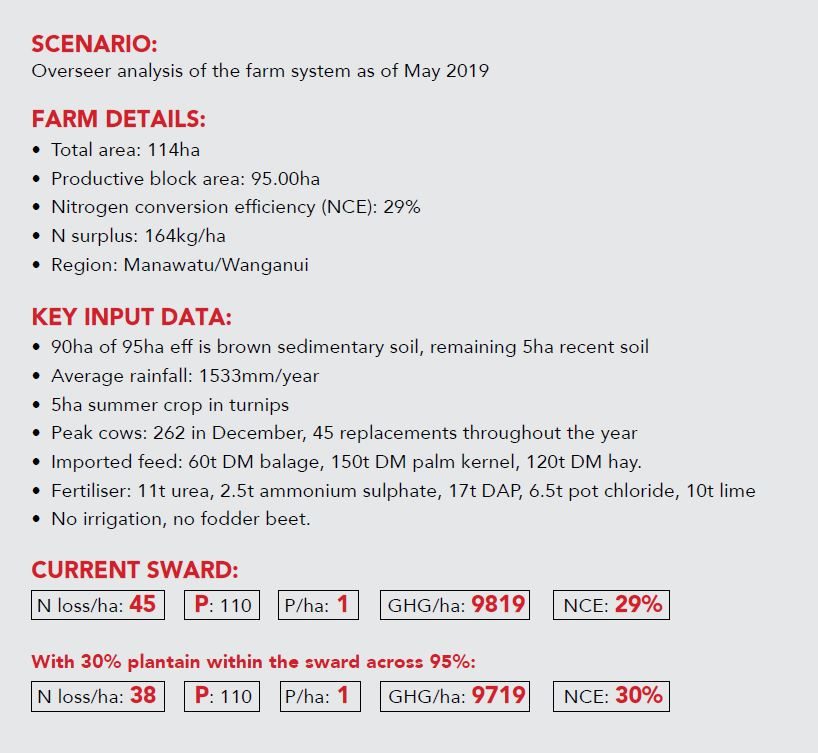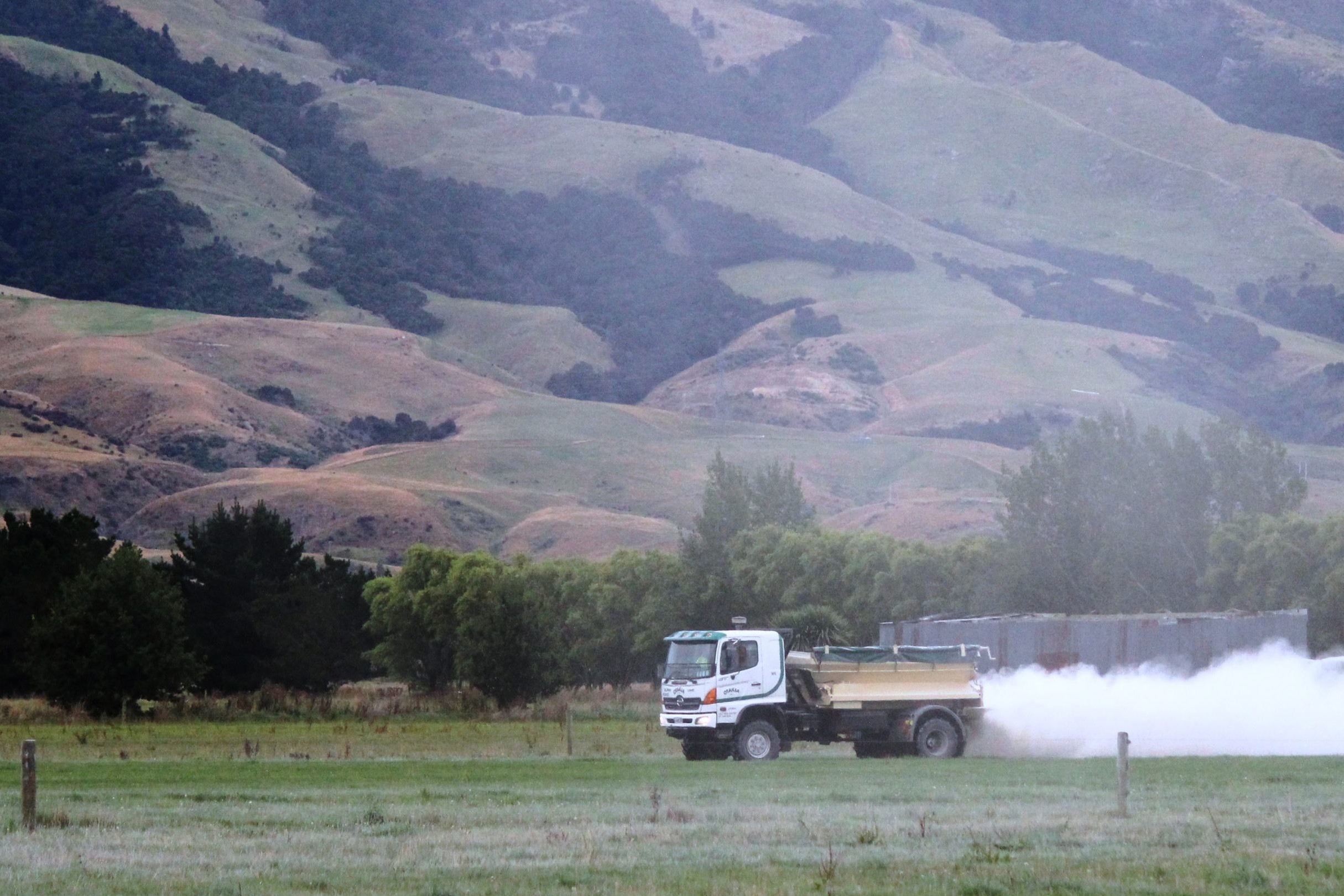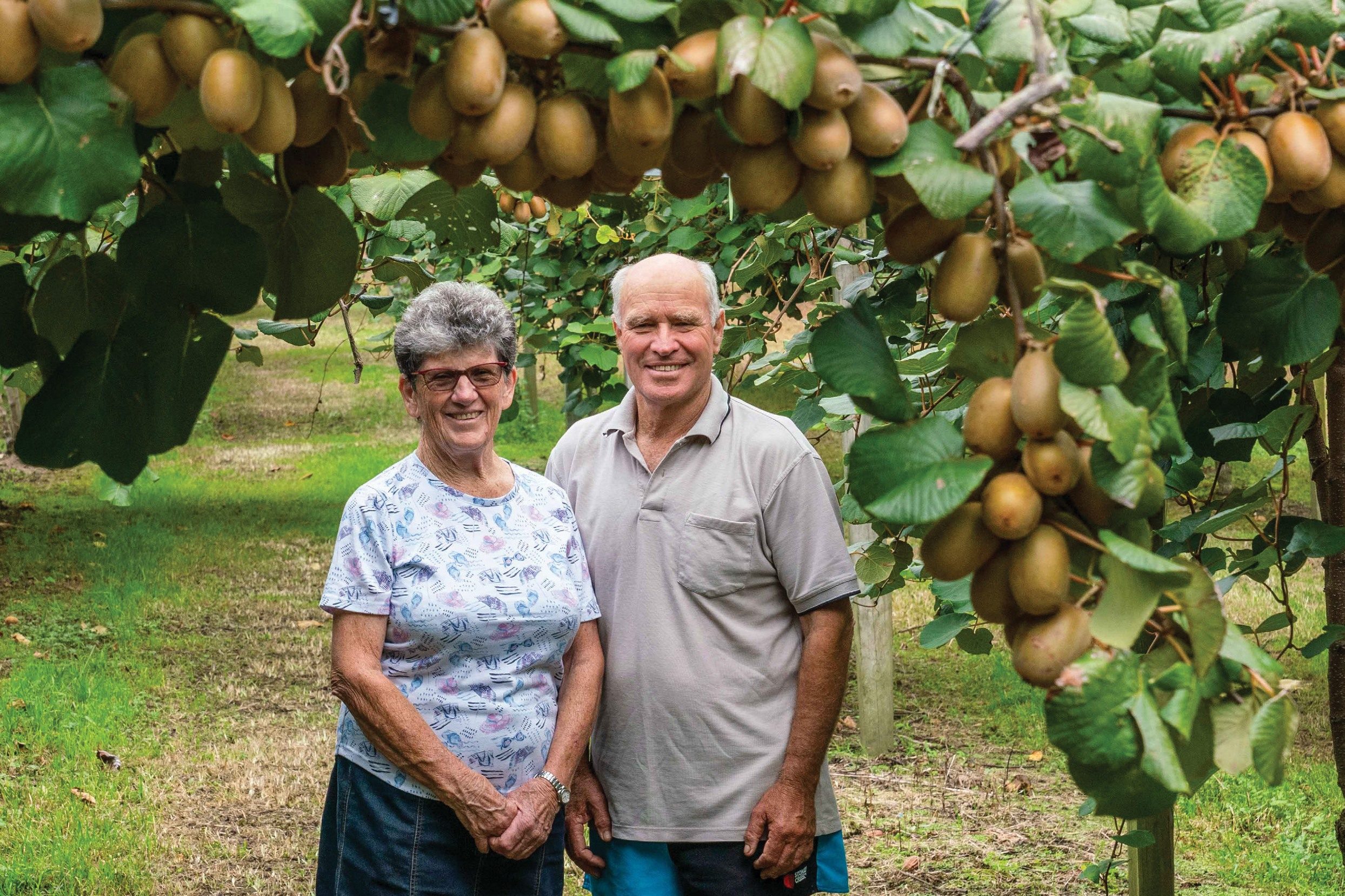Pastures containing up to 30% plantain have shown promise in reducing N losses. Jackie Harrigan has the story. Photos by Brad Hanson.
Faced with cow numbers dropping from 250 to 160, or spending huge amounts on a barn to get cows off their Norsewood pastures, Jamie and Natalie Arrandale are pinning their hopes on the Tararua plantain project to help them bring down nitrogen (N) losses and meet Horizons Regional Council’s N loss targets.
Jamie and Natalie have farmed in the Upper Norsewood area since buying the farm in 1992, shifting down from the Waihi Beach area in the quest to get into ownership of their own farm.
“It was a big change going from white sands (on the Waihi Beach) to the snow.” (Norsewood gets snow at least once each winter.)
With an attractive backdrop of the Ruahine Ranges just up the road, the 95ha farm has the charm of an ever-changing play of light on the bush, but the trio of high altitude (360m above sea level) with high rainfall and a free-draining soil type makes it difficult to meet the strict N loss targets demanded by its placement in the sensitive catchment of the Upper Manawatu River.
Now, with their son Hayden coming on to the farm as contract milker, Jamie and Natalie are nervous of any changes that would compromise the profitability of the enterprise, or give a hit to the capital value of the farm as they look ahead to issues of farm succession and retirement in the future.
From 2014 through to 2018 they have been a case study for Massey University third-year farm management students, and their chosen topic of investigation has been meeting the Horizons’ nutrient budget requirements.
While the students were diligent about coming up with mitigations for the Arrandale’s N loss problems, none of the options came without a huge price tag (the wintering barn) or a terminal hit to profitability (reducing cow numbers to 160).
While the bordering Mangatiwainui River has been fenced off ever since the Arrandales purchased the farm, upgrading their effluent system to have 100 days storage has been put on hold until the regional council has decided what they want them to do to become consented.
“We have a consent for 400 cows as we have a large effluent irrigation area of 80ha, but currently just have the storage for a week.”
Meeting the requirements for the consenting process has taken up a lot of Jamie’s time and energy, alongside his farm advisor of many years John Simmonds from DairyTeam.

PLANTAIN INTRODUCED
Recently Jamie and Natalie have thrown themselves into the Tararua plantain project, the DairyNZ extension project that is encouraging all 118 unconsented farmers in the Tararua region to plant and sustain at least 30% of their farms in plantain, to drive down the N leaching across the Manawatu River catchment.
The Arrandales started down the plantain road in 2014, well before the Tararua project, trialing a sward as a summer crop to see if the deep-rooting herb would hang on better than their 4ha summer turnip crop.
The trial was a success and convinced Jamie that the cows would actually eat it and milk well off the crop, so he had the confidence to get involved in the Tararua plantain project and sow 4ha of two straight plantain swards and 4ha of a mixed sward, with the results being measured and monitored by DairyNZ’s Pip Hedley.
“The trial concluded that, if we are wanting to get to 30% of the farm in plantain, we were better to sow it into a mixed sward across the whole platform,” Jamie said.
MIXED SWARD ESTABLISHMENT
To create the mixed sward, Jamie had a contractor direct drill grass seed into the last paddocks of the pure plantain crop.
“We direct drilled grass into the sward last autumn – we didn’t worry about spraying it out.”
 He had also drilled turnips into the remnants of a couple of plantain paddocks and had a cocktail of plantain and turnips.
He had also drilled turnips into the remnants of a couple of plantain paddocks and had a cocktail of plantain and turnips.
He has been impressed with the persistence of the plantain.
“I thought we had lost it to grass grub a few years ago but it’s pretty resilient – it just came back.
“If we can get 30% of our pastures into plantain, we can hopefully get our leaching down to where it needs to be.
“We need to reduce N leaching from 45kg N/ha/year to 29kg by year 20.” (See Table 1.)
By introducing plantain up to 30% over the whole farm, the N leaching should drop to 38kg and, along with other mitigations, the family can keep driving the N loss down.
He is understandably nervous as to what the outcome of Horizons’ reset of the N loss targets under the One Plan legislation.
“I keep asking myself – will they accept that level of plantain? And that level of N loss? And what else will we need to do that doesn’t affect our profitability?”
MAINTAINING PLANTAIN IN THE SWARD
While the cost of establishing plantain into the current pastures can be spread over the next few years as pastures are renewed, Jamie says he will look on it as a cost of compliance and a way to keep farming.
“We are probably renewing 6-8ha through the turnip cropping and plantain cropping – so the whole farm gets renewed over an 11-12 year cycle, but we could do more than that by drilling the plantain into the existing pastures – it’s not like you are taking it out of the rotation.
“We trialed two paddocks two years ago – mixing plantain into the pasture mix in one block and then sprinkling the plantain on top of existing pastures in the other block – and there was basically no difference in the establishment,” he said.
“There was no noticeable difference in the plants after the March sowing.
“We might get to the point that to keep it in the pasture in the right ratios we could throw it onto the fertiliser mixture, if it doesn’t react badly with the fert – I don’t know – we might just need to keep spinning it on in the autumn in light amounts.”
Other issues are the slow growth of the herb through the winter, which Jamie says is not going to suit the winter milking guys. But he and Natalie bought a run-off up the road after Mycoplasma bovis arrived in the country, and the cows can be walked up there to winter off the platform, allowing the pasture and plantain to grow a bulk of feed for the spring.
They trialed fodder beet for winter feed for 100 cows on the platform for a couple of years after some of the students did a project on that, but they decided that it might not be a good crop with the new wintering rules around pugging. The only problem Jamie foresees with the plantain is the limited options for control of weeds in new grass/plantain swards owing to the plantain being killed out.
“We learnt the lesson that weed control has to be done prior to establishment of the sward – you can’t do much after the plantain goes in.”
“You need to spray out the weeds in the autumn, preferably with a double spray, and then go in with the new grass/plantain mix in the spring.”
The Arrandales found it worked well with a autumn spray then putting in a short rotation crop of Tabu ryegrass that was eaten off and then sprayed out in the spring and put into the plantain mix.
FARM FACTS:
Owners: Jamie and Natalie Arrandale
Contractor milker: Hayden Arrandale
Cows: 250 Friesians peak milked (2.6cows/ha)
Production: 106,000kg MS, 432kg MS/cow, 1118kg MS/ha
Total pasture harvested: 12.2t DM/ha
Supplement: Hay 30t DM, balage 72t DM, palm kernel 153t DM







